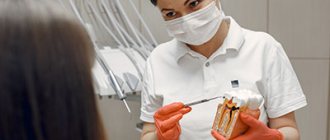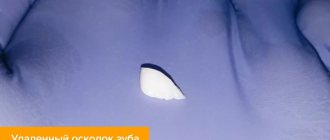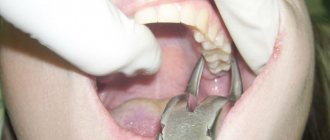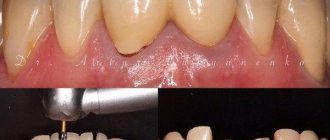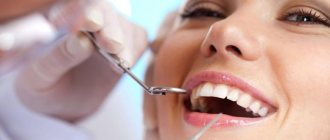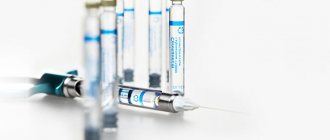After your tooth was removed, the doctor gave you clear instructions and recommendations on what to do and what not to do. But you came home and in the confusion forgot what the doctor said?
We will try to help you and answer the most common questions that a patient has after tooth extraction.
- How quickly does a wound heal after tooth extraction?
- What complications can occur after tooth extraction?
- How long should you keep the tampon in after tooth extraction?
- How to rinse your mouth after tooth extraction?
- What recommendations should be followed after tooth extraction?
- In what case should you urgently consult a doctor after tooth extraction?
What recommendations should be followed after tooth extraction?
- Do not eat food for two hours after surgery.
- Do not spit out blood clots during the day, as their absence can lead to exposure of the wound, which will negatively affect the healing process. Experts recommend swallowing saliva, even if it contains a small percentage of blood.
- To make the swelling go away faster, the patient can apply cold compresses to the site of the extracted tooth, but with caution so as not to get frostbite. The use of any warming compresses and scarves is prohibited!
- Refuse hot food and give preference to warm food, including drinks. You should also avoid spicy, sour and fatty foods for 1 week.
- Under no circumstances should you chew food at the site of the extracted tooth .
- Avoid drinking alcohol and smoking for the first two days.
- Do not apply medications to the wound or rinse the mouth with tinctures containing alcohol.
- Avoid any physical activity for two weeks.
- Do not touch the hole with your hands or foreign objects!
- Do not visit saunas and steam baths for a week.
Why you need to rinse the wound
Open wound after tooth extraction
This is a tasty morsel for the proliferation of pathogenic bacteria.
There are a lot of them in the mouth, as they accumulate near stuck pieces of food and plaque. If the gums are not protected, bacteria can provoke an inflammatory process
, suppuration and swelling of the soft tissues in the wound area, and cause pain. It is better not to disturb the wound for a day after the operation, so that a blood clot can form and the bleeding stops. Then you need to start rinsing to protect the postoperative site from bacteria and speed up wound healing. Let's figure out what to rinse with.
When you need to remove the bottom "eight". Indications
Wisdom teeth are distinguished by late eruption, which occurs at 20-30 years of age. During this period, the dental system is practically formed and the third molars often do not have enough space in the dentition. Eruption causes various complications and in most cases requires removal of the molar. In addition, in humans, with evolution, a decrease in the size of the jaws occurs, since, due to the nature of nutrition, the chewing load is constantly decreasing.
Most people do not take good hygienic care of their last teeth. They are located at the end of the dentition, and it is often technically impossible to clean them well. This leads to the accumulation of plaque, damage to the enamel by the carious process and its complications (pulpitis, periodontitis). Root canal treatment is very difficult due to difficult access. Therefore, eights must be removed in 90% of cases.
Removal of a fully erupted wisdom tooth
Removal of the lower wisdom tooth is indicated in the following cases:
- Excessive pressure on neighboring teeth, which can lead to their destruction;
- Injury to surrounding tissues;
- Constant biting of the mucous membrane of the cheek;
- Carious lesion that cannot be eliminated due to difficult access;
- Complications of caries: pulpitis, periodontitis, periostitis;
- Dystopia – location of the molar outside the dentition;
- A tooth that is a chronic source of infection;
- Formation of perihilar cysts, granulomas;
- Malocclusion and displacement of other teeth.
How is the socket prepared for implantation?
The entire procedure takes place under anesthesia, so the patient will not feel pain or discomfort. It is important for the patient to choose effective anesthetic drugs that do not cause allergies and eliminate all pain. Therefore, when creating a treatment plan, pay more attention to preparation and diagnosis. During the procedure, the implantologist will perform the following actions:
- Treat the surgical site with an antiseptic.
- Fill the hole with a bone-forming compound.
- Cover with a special hypoallergenic membrane.
- Fixes the surgical surface by tensioning the free edges of the connective tissue.
- He will put stitches.
When should a wisdom tooth in the lower jaw not be removed?
There are no absolute contraindications to removal, but there are relative ones:
- The figure eight does not need to be removed if it is correctly positioned, functions and does not injure surrounding organs;
- The operation cannot be performed without preliminary preparation if the tooth is located in the area of the tumor or puts pressure on a large vessel or nerve;
- For some diseases, it is necessary to prepare the body for surgery (rheumatism, diabetes, blood diseases, etc.)
You can carry out high-quality removal of a wisdom tooth of any complexity at the Berezka dental clinic. Specialists perform various surgical procedures effectively, safely and painlessly. All manipulations are carried out professionally and taking into account the individual characteristics of each patient.
Dressings used in dentistry
Gum dressings are composed of:
- soft - ointments, gels (actovegin, solcoseryl) - applied in a thin layer to the wound surface. This category includes bandages made of cotton wool, gauze, bandages;
- semi-solid - are made by applying a mixture of dentin paste and ointment to the prepared tissue surface. The bandage is applied to the wound and fixed by compressing the teeth. After 6 - 7 minutes it hardens and is securely attached to the desired area;
- solid - septopack (ready-made product) or independently prepared using dentol, repin. The components have a high degree of biological compatibility with the mucous membrane, their use significantly accelerates the wound healing process;
- collagen films - have anesthetic and antiseptic properties, promote rapid regeneration of soft tissues of the oral cavity;
- adhesive - are non-toxic compositions based on polyurethane. Once on the mucous membrane, the material polymerizes, creating a plastic, porous film.
When is it necessary to prepare a hole for implantation?
If the bone volume is insufficient for implantation, the implantation operation will not be possible, so preliminary preparation is required. It is also recommended:
- To eliminate the risk of injury to the maxillary sinuses.
- When planning orthodontic treatment.
- When it is impossible to stabilize the implant in the tooth socket after removal.
- With age-related changes, bone tissue undergoes anatomical and physiological changes over time.
- To secure and extend the service life of any dental implant.
The material used is a synthetic biocompatible mass in granules, barrier membranes that are removed independently as new bone grows, or a connective tissue graft.
Difficult removal
Removing a wisdom tooth in the lower jaw is often difficult. The operation differs in its duration, the use of a special instrument, and the use of a drill. Often the tooth is sawed and removed in parts. In this case, the figure eight is incorrectly positioned or impacted. Removal consists of the following steps:
- High-quality pain relief;
- Preparation of tools and auxiliary materials;
- Separating the tooth ligament or creating access;
- Application and fixation of forceps;
- Extraction of a molar in whole or in parts;
- Inspection of the bone socket, cleaning it if necessary;
- Stop bleeding;
- Stitching;
- Prescriptions and recommendations for the patient.
Duration of wearing bandages in dentistry
Depending on the properties and purposes, the duration of wearing the bandage is determined:
- with a therapeutic effect - from 2-3 hours to 3-4 days. They mainly use gauze and bandages, applying the necessary drugs that have antimicrobial and anti-inflammatory properties to them;
- for protection purposes, adhesive, semi-solid and hard dressings are often used, capable of fixing the application for 4-7 days;
- collagen films - have the possibility of the longest rehabilitation period (up to 20 days). Can be used as a bandage after surgery and as an independent treatment for bedsores from dentures.
A variety of dressing materials allows dentists to minimize the risk of postoperative complications.
Types of dressing material in dentistry
The following are widely used in dentistry:
- Absorbent cotton wool is used in therapeutic dentistry to dry the patient’s oral cavity during treatment. Cotton rolls are formed by twisting the material onto the handle of any dental instrument.
- White gauze is used to make napkins, balls, and strips for tamponade. The main condition is that the edges of the gauze are folded into the middle - this prevents fibers from getting into the wound. Used as a drying material for wounds.
The dressing material must be sterilized before use.
Indications and contraindications
Indications for the procedure:
- To prevent bone loss. — To eliminate defects associated with periodontal disease. — Creation of an optimal contour of bone and soft tissue to preserve the anatomical features of this area. — To ensure a good aesthetic result.
There are contraindications:
— Acute infectious diseases of the nasopharynx and oral cavity. — Oncological diseases. — Pregnancy and breastfeeding. — In immunodeficiency states. — State of acute pain after removal.
Manufacturing
To make a turunda, sterile gauze wipes, screws, and cotton wool are used. It is important to observe the proportions of dilution of the impregnation product and the choice of composition. For preparation, medicinal ether is used in the proportion of ten parts of ether to one part of iodoform.
The finished solution is not stored; it quickly loses its properties. therefore, the doctor makes the amount that will be sufficient for use during one appointment.
To make turunda, a piece of gauze is cut into thin ribbons. The length of each depends on the characteristics of the hole; impregnation is carried out before use. Additional medications are used if an anti-inflammatory, therapeutic effect is required.
Medicines from the pharmacy
It is better to use antibacterial and antimicrobial agents that do not contain alcohol. This way, you will protect the delicate tissue of the damaged gum from unnecessary burns.
- Miramistin.
It has the power to destroy bacteria, viruses, and fungi. You need to use a solution with a concentration of one hundredth of a percent. It is practically harmless. Suitable for babies and pregnant women. Use both as a solution and as a spray. Apply 3 times a day for a week.
- Chlorhexidine is
active against bacteria and some types of viruses. A solution with a concentration of no more than 0.05% is used. Miramistin is an order of magnitude cheaper. Maintains effect for up to 4 hours.
- Hydrogen peroxide
is a classic option. ITS three percent solution is a powerful antiseptic. However, use it yourself with caution. Contact with the wound produces foam, which can damage the blood clot. The liquid itself can cause irritation of the mucous membrane.
- Furacilin solution.
Used for purulent inflammation of the wound. In pharmacies it is available in liquid form and in tablets, from which you need to make a solution yourself. Crush 10 yellow tablets and dissolve in a liter of water. Rinsing is not recommended; it is better to use baths.
You can use decoctions
from chamomile
,
calendula, oak bark, sage, St. John's wort and eucalyptus.
On the effectiveness of anti-inflammatory herbs
in
In this case, you need to consult a dentist.
If the wound after tooth extraction is large and there is a risk of damaging the blood clot, it is better to prefer baths to rinses.
Take a sip of the solution into your mouth, maintain the liquid in the wound area and spit it out.
Attention! Do not use potassium permanganate. Reasonable people abandoned it long ago - it burns mucous tissue.



